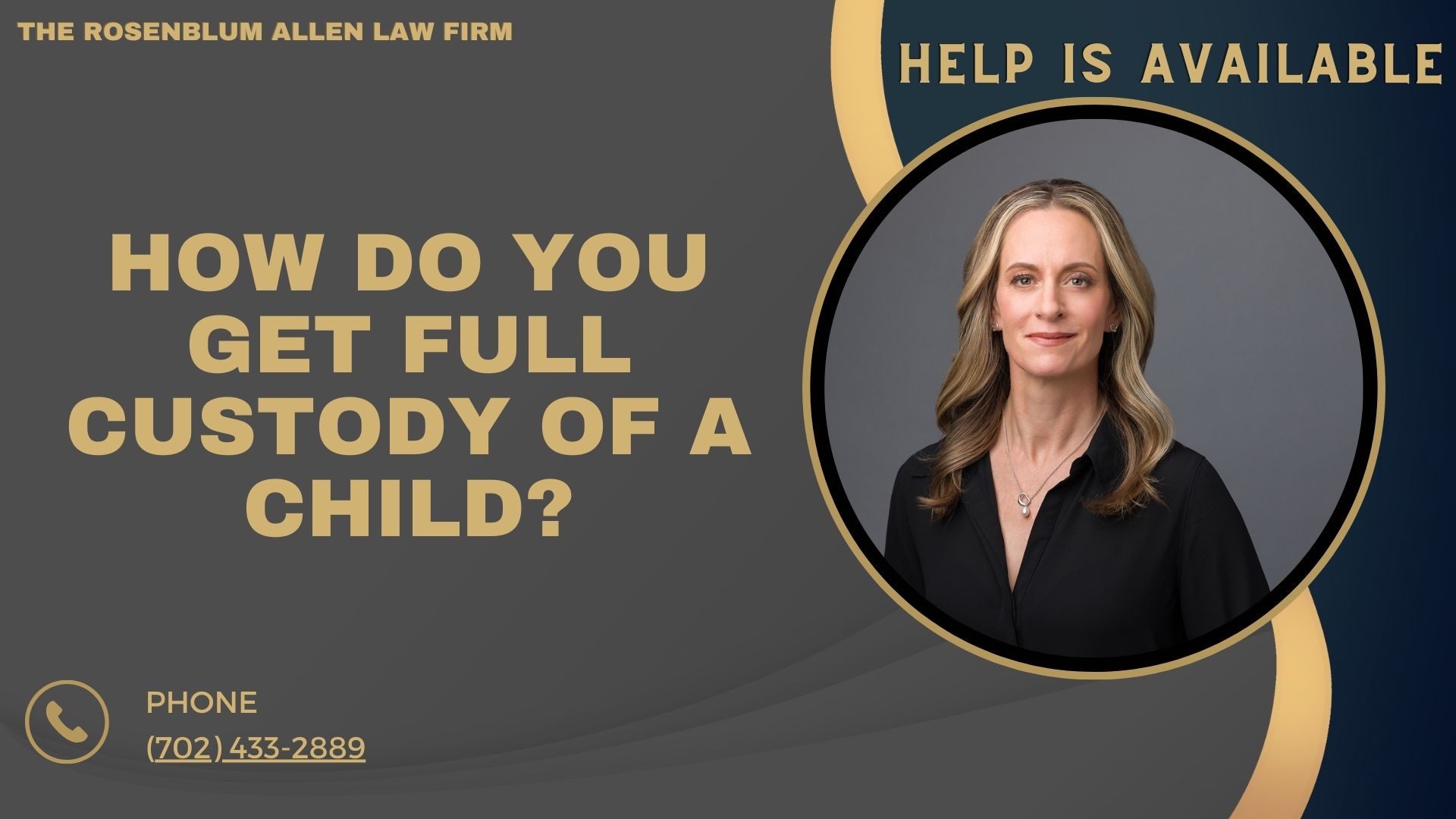Child custody refers to the legal and practical relationship between a parent and a child. It encompasses parents’ rights and responsibilities concerning their child’s care and upbringing. Understanding the different types of custody is crucial when navigating custody arrangements.
Legal Custody vs. Physical Custody
- Legal Custody: This gives a parent the right to make important decisions about the child’s life, including education, healthcare, and religious upbringing.
- Physical Custody: This determines where the child lives. The parent with physical custody has the child living with them.
Joint Custody vs. Sole Custody
- Joint Custody: Both parents share decision-making responsibilities and may have equal or significant time with the child.
- Sole Custody: One parent has exclusive rights to make decisions for the child and typically has the child living with them.
Types of Custody Arrangements
Understanding the types of custody arrangements can help parents determine what may be best for their situation.
Full Custody
Full custody usually means one parent has legal and physical custody of the child. This arrangement may be sought when one parent cannot provide a stable environment or the child’s safety is at risk.
Joint Custody
Joint custody involves both parents sharing responsibilities. This can be beneficial for the child as the child maintains relationships with both parents.
Visitation Rights
In cases where one parent has full custody, the other parent may have specific visitation rights. These rights can be formalized in a court order and ensure that the non-custodial parent has time with the child.

Legal Standards for Custody Decisions
Best Interests of the Child
Courts always prioritize the child’s best interests when making custody decisions. This standard considers various factors to ensure the child’s welfare.
Factors Considered by Courts
- Emotional and Physical Needs: Stability, safety, and emotional security.
- Parental Involvement: Each parent’s relationship with the child.
- Living Situation: The home environment and its suitability.
- Child’s Preferences: Depending on age, the child’s wishes may be considered.
Importance of Stability and Safety
A stable environment is vital for a child’s development. Courts favor arrangements that offer consistency in the child’s daily life.
State-Specific Custody Laws
Custody laws vary significantly from state to state, so understanding your local laws is essential.
Variations in Laws by State
Each state regulates custody arrangements differently. It’s essential to familiarize yourself with the laws specific to your location.
Resources for Local Laws
To learn more about your state’s laws, consider these resources:
- State Government Websites: Most states provide legal information online.
- Local Family Law Attorneys: They can offer guidance based on your circumstances.
- Legal Aid Organizations: These can provide free or low-cost legal assistance.
Steps to Obtain Full Custody
Assess Your Situation
Before pursuing full custody, it’s essential to evaluate your situation thoroughly.
Evaluate Your Child’s Needs
Consider what your child requires regarding emotional, educational, and physical support. Understanding their needs can help you frame your case for full custody.
Document Your Current Custody Arrangement
Keep detailed records of any current custody arrangements. Note any incidents or issues supporting your case for full custody.
Gather Evidence
A strong case for full custody relies on evidence.
Importance of Documentation
Documentation plays a crucial role in custody battles. Having a well-organized set of documents can significantly impact your case.
Types of Evidence to Collect
- Communication Records: Text messages, emails, and correspondence with the other parent.
- Witness Statements: People who can attest to your parenting abilities or the other parent’s behavior.
- School Records: Report cards, attendance records, and relevant school correspondence.
- Medical Records: Document your child’s health needs and any care-related issues.
Seek Legal Advice
Navigating custody matters can be complex. Seeking legal advice can provide clarity and direction.
Benefits of Consulting a Family Law Attorney
A family law attorney can help you understand your rights and guide you. Their expertise can be invaluable in preparing your case.
How to Choose the Right Attorney
When selecting an attorney, consider the following:
- Experience: Look for someone specializing in family law and handling custody cases.
- Reputation: Check reviews and testimonials from past clients.
- Communication Style: Ensure you feel comfortable discussing personal matters with them.

Filing for Custody
Preparing Your Case
Preparation is key when filing for custody. A well-prepared case can make a significant difference in court.
Understanding the Required Forms
Each state has specific forms for custody filings. It’s essential to understand which forms you need to submit. Common forms include:
- Petition for Custody: This initiates the process.
- Financial Affidavit: This outlines your financial situation.
- Parenting Plan: A detailed proposal for custody arrangements.
Usually, these forms are found on your state’s family court website or at the courthouse.
How to File Your Petition
Filing your petition involves several steps:
- Complete the Forms: Fill out all necessary forms carefully.
- File with the Court: Submit your completed forms to the appropriate family court.
- Pay Filing Fees: Be prepared to pay any associated fees. If you cannot afford them, ask about a fee waiver.
- Serve the Other Parent: Ensure the other parent receives a copy of the filed petition. This can be done through a process server or a local sheriff’s office.
Representing Yourself vs. Hiring an Attorney
You may wonder whether to represent yourself or hire an attorney. This decision can impact your case significantly.
Pros and Cons of Self-Representation
Pros:
- Cost Savings: No attorney fees.
- Complete Control: You manage your case and strategy.
Cons:
- Complexity: Family law can be intricate and challenging to navigate.
- Lack of Experience: You may need to catch important details that an attorney would need to catch.
Why Hiring a Lawyer Might Be Beneficial
Hiring a family law attorney can provide many advantages:
- Expertise: They know the laws and procedures.
- Objective Perspective: They can offer unbiased advice.
- Negotiation Skills: Attorneys are experienced negotiators and can advocate for your best interests.
The Custody Hearing Process
What to Expect in Court
The custody hearing is a crucial part of the process. Understanding what to expect can help ease your anxiety.
Structure of the Hearing
A typical custody hearing may follow this structure:
- Opening Statements: Each parent presents their case briefly.
- Evidence Presentation: Both sides present their evidence and witnesses.
- Questioning: The judge may ask questions or allow attorneys to cross-examine witnesses.
- Closing Statements: Each parent summarizes their case.
Roles of the Judge and Attorneys
- The Judge: They oversee the hearing, make rulings, and decide on custody.
- The Attorneys: They represent each parent, presenting evidence and arguments.
Presenting Your Case
Effectively presenting your case is vital. Here are some tips to help you succeed.
Organizing Your Evidence
Organize your evidence into a clear and concise format. Consider using a binder with tabs for different categories, such as:
- Personal Statements: Your written testimony and your child’s needs.
- Documentation: Copies of all relevant documents (school records, communication, etc.).
- Witness Information: Names and contact details of witnesses who can support your case.
Strategies for Effective Communication
Clear communication can significantly impact your case. Keep these strategies in mind:
- Stay Calm: Approach the hearing with a calm demeanor.
- Be Respectful: Address the judge and the other parent politely.
- Stick to the Facts: Focus on the evidence and avoid emotional arguments.

After the Custody Decision
Understanding the Court’s Decision
Once the judge decides, it’s crucial to understand the outcome.
Reviewing Custody Orders
Carefully read the custody order. It should outline:
- Custody Arrangements: Who has legal and physical custody?
- Visitation Rights: Any rights granted to the non-custodial parent.
- Additional Requirements: Any conditions or responsibilities set by the court.
Next Steps if Custody is Granted
If the court grants you full custody, take these steps:
- Implement the Order: Begin following the court’s orders immediately.
- Communicate with the Other Parent: Maintain open lines of communication about the child’s needs.
- Keep Records: Document any interactions related to custody.
Modifying Custody Orders
Life changes, and sometimes custody orders need to change too. Knowing how to request a modification can be essential.
When and How to Request Changes
You can request changes to a custody order under certain circumstances, such as:
- Significant Life Changes: Changes in income, relocation, or the child’s needs.
- Safety Concerns: If the child’s safety is compromised.
Grounds for Modification
To modify a custody order, you typically must show:
- Changed Circumstances: Evidence that a significant change has occurred since the last order.
- Child’s Best Interests: Demonstrating how the change will benefit the child.

Navigating the journey to obtain full custody of a child is complex. Understanding child custody definitions, legal standards, and the process can empower you to make informed decisions. Gather evidence, seek legal advice, and prepare thoroughly for court.
If you’re facing a custody battle, don’t hesitate to ask for help. Support is available through attorneys, support groups, and educational resources. Remember, prioritizing your child’s well-being is the most important goal. Seeking the proper guidance can lead you to the best outcome for you and your child.

Frequently Asked Questions
What is full custody?
Full custody typically means that one parent has both legal and physical custody of the child. This arrangement allows that parent to make all significant decisions about the child’s upbringing and provides the child a stable living environment with that parent.
How can I prove I deserve full custody?
To prove you deserve full custody, gather evidence that demonstrates your ability to provide a stable, loving environment for your child. This can include:
- Documentation of your involvement in the child’s life (school events, doctor appointments, etc.)
- Records of communication with the other parent
- Statements from teachers or childcare providers
- Evidence of any safety concerns related to the other parent
Can I get full custody if the other parent is not involved?
While it may be easier to obtain full custody if the other parent is uninvolved, the court will still consider the child’s best interests. If the other parent is absent or unfit, document this involvement (or lack thereof) and be prepared to present your case in court.
What if I need to modify an existing custody agreement?
To modify an existing custody agreement, you generally need to demonstrate a significant change in circumstances since the original order. This can include changes in the child’s needs, relocation, or safety concerns. File a petition for modification with the court and provide evidence supporting your request.
Do I need a lawyer to get full custody?
While it’s not mandatory to hire a lawyer, having one can be highly beneficial. An experienced family law attorney can navigate the legal system, help you gather evidence, and represent your interests in court.
How long does the custody process take?
The custody process can vary in duration depending on the complexity of the case, the court’s schedule, and whether both parents can reach an agreement. Generally, it can take several weeks to months to finalize custody arrangements.
What happens if I do not get full custody?
If you do not get full custody, you can still seek a visitation agreement that allows you to maintain a relationship with your child. You may also have the option to appeal the decision if you believe there were errors in the process.

Child Custody: The legal relationship between a parent and a child, encompassing the rights and responsibilities related to the child’s care and upbringing.
Legal Custody: The right of a parent to make significant decisions about the child’s life, including education, healthcare, and religious upbringing.
Physical Custody: Determines where the child resides. The parent with physical custody has the child living with them.
Joint Custody: An arrangement where both parents share decision-making responsibilities and may have significant time with the child.
Sole Custody: A custody arrangement where one parent has exclusive rights to make decisions for the child and typically has the child living with them.
Full Custody: Usually refers to one parent having both legal and physical custody of the child, allowing them to make all significant decisions about the child’s life.
Visitation Rights: The legal rights granted to the non-custodial parent to spend time with the child.
Best Interests of the Child: A legal standard used by courts to determine custody arrangements, focusing on the child’s emotional, educational, and physical needs.
Modification: The process of legally changing an existing custody arrangement based on significant changes in circumstances.
Petition for Custody: A legal document filed in court to initiate the process of seeking custody of a child.
Financial Affidavit: A sworn statement that outlines a parent’s financial situation, often required in custody proceedings.
Parenting Plan: A detailed proposal outlining the custody arrangement, including decision-making responsibilities and visitation schedules.
Evidence: Information presented in court to support a party’s claims in a custody case, including documentation, witness statements, and records.
Support Groups: Community organizations where individuals facing similar challenges can share experiences and offer emotional support.
Legal Aid: Services that provide free or low-cost legal assistance to individuals who cannot afford an attorney, often focused on family law matters.
Counseling Services: Professional support services that help individuals cope with emotional distress, often relevant during custody disputes.
Nonprofit Organizations: Organizations that provide various services, often focused on social issues, including family law and custody support.
Pro Bono Services: Legal services provided by attorneys for free or at a reduced fee, often available to low-income individuals.
Emotional Support: Support provided by friends, family, or professionals to help individuals manage feelings and cope with challenging situations.

For our valued readers who are navigating the complexities of family law, we want to remind you that our lead attorney, Molly Rosenblum Allen, Esq., has developed comprehensive resources to support you during these challenging times. Here is a list of insightful guides and articles that you may find beneficial:
-
Las Vegas Custody Attorney: Offering effective guidance on navigating child custody cases in Las Vegas. Read more.
-
Fathers Rights: A dedicated resource to help fathers understand and protect their legal rights. Learn more.
-
Supervised Visitation: Clarifying the details and regulations around supervised visitation.
-
Changing Custody Agreement: Providing facts for Nevadans on how to approach amending a custody agreement. Get informed.
-
Grandparents Rights Nevada: Assisting grandparents in understanding their legal rights concerning their grandchildren. Find out more.
-
Long Distance Co-Parenting: Strategies and tips for managing co-parenting across distances. Explore further.
-
How a Mother Can Lose a Custody Battle: Insight into the pitfalls mothers should avoid during custody disputes. Read the full article.
-
Custody Battle Tips for Nevadans: Practical advice for those engaged in a custody conflict within Nevada. Learn the tips.
-
What Not To Say In Child Custody Mediation: Guidance on what to avoid saying during mediation to keep proceedings constructive. Find out what not to say.
-
How Much is a Custody Lawyer: Understanding the financial aspects of hiring a custody lawyer in Las Vegas. Get the facts.
-
Types of Custody: A detailed look into different custody arrangements that can be pursued. Examine the types.
-
At What Age Can a Child Decide to Stop Visitation: Information on the age at which a child’s preference might be considered in visitation decisions. Learn about the age considerations.
Each resource is tailored to provide clarity and support for those facing legal challenges in family law—crafted by an experienced attorney who understands your needs.

Offsite Resources You May Find Helpful
Here are seven offsite resources that provide information about obtaining full custody of a child:
FindLaw: This online resource provides free legal information, a lawyer directory, and other resources on a wide range of legal topics, including how to get full custody of a child.
Justia: Justia offers free legal information and a directory of attorneys for various legal issues, including how to obtain full custody of a child.
American Bar Association: The ABA provides a variety of resources on legal topics, including information on child custody laws and how to gain full custody.
Nolo: Nolo provides legal information for consumers and small businesses, including articles, blogs, FAQs, and news on how to get full custody of a child.
Avvo: This website provides a directory of lawyers, legal advice, and other resources on a broad range of legal topics, including how to get full custody of a child.
LegalMatch: This online legal matching service helps individuals find lawyers in their area and provides advice and resources on family law matters, including how to get full custody of a child.
Child Welfare Information Gateway: This service of the Children’s Bureau, Administration for Children and Families, U.S. Department of Health and Human Services, provides access to information and resources on a variety of child welfare topics, including child custody laws and how to obtain full custody.

What's Next?
Are you in the Las Vegas area and need a reliable Las Vegas child custody attorney?
The Rosenblum Allen Law Firm can help!
Our team of experienced attorneys is dedicated to protecting your rights. We have an excellent track record, with hundreds of successful cases under our belt.
Plus, we provide personalized attention for every client’s needs and actively keep them updated on their case status from start to finish.
Get the quality care that best serves your interests: Hire the Rosenblum Allen Law Firm today!
Call us at (702) 433-2889 – we look forward to helping you sort through this challenging time in your life.
The Reason You Haven't Hired A Child Custody Attorney Yet
We’re ready to fight for the rights of your family if you hire us. We’re waiting to jump into action on the behalf of your family.




